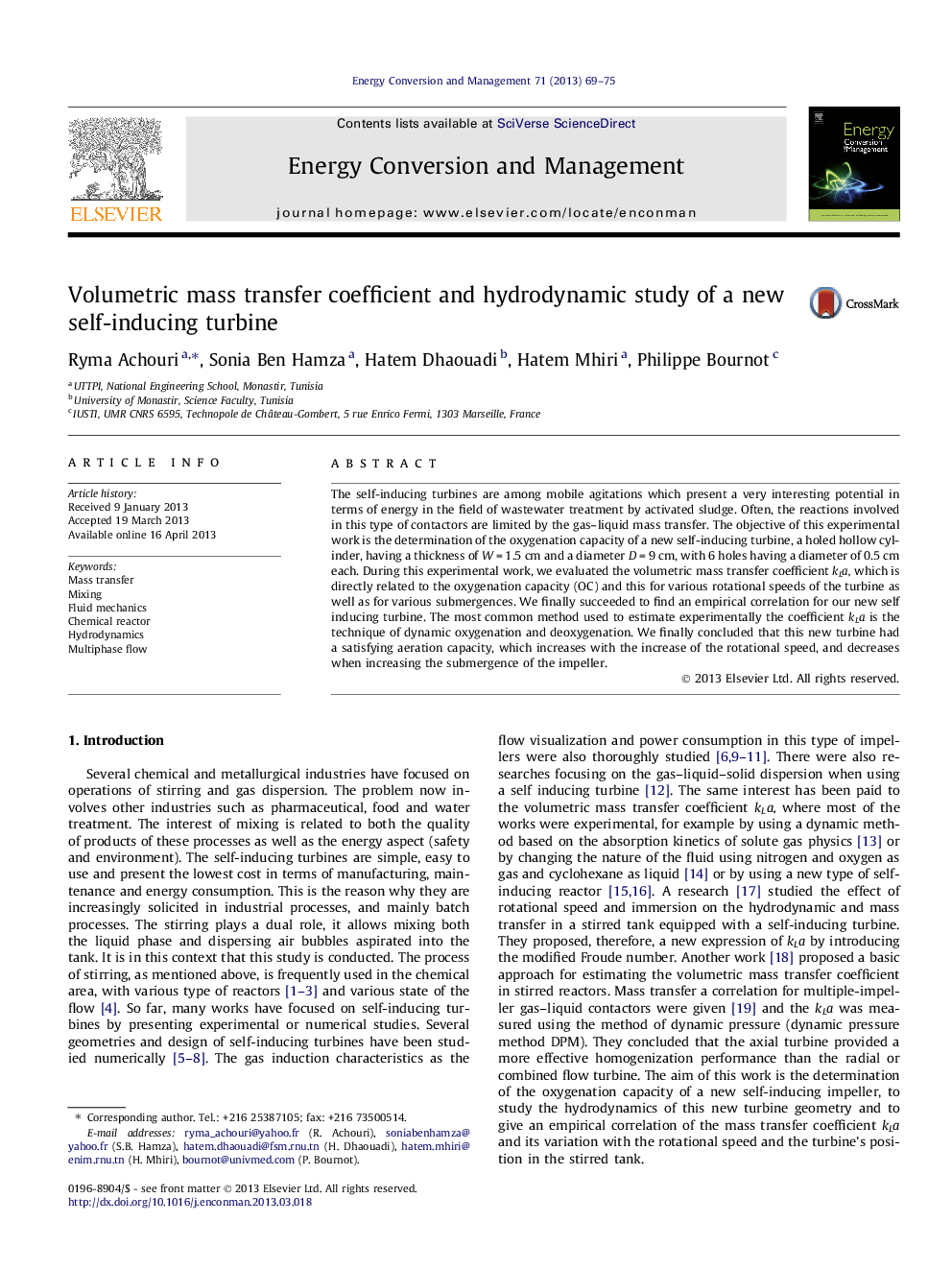| Article ID | Journal | Published Year | Pages | File Type |
|---|---|---|---|---|
| 772148 | Energy Conversion and Management | 2013 | 7 Pages |
•Experimental study of a new self inducing turbine.•Hydrodynamic parameters study of the generated flow.•Experimental study of the evolution of kLa and we give an empirical correlation.•Comparing our results to a previous research [17].•Find a good agreements, with better performances of our turbine.
The self-inducing turbines are among mobile agitations which present a very interesting potential in terms of energy in the field of wastewater treatment by activated sludge. Often, the reactions involved in this type of contactors are limited by the gas–liquid mass transfer. The objective of this experimental work is the determination of the oxygenation capacity of a new self-inducing turbine, a holed hollow cylinder, having a thickness of W = 1.5 cm and a diameter D = 9 cm, with 6 holes having a diameter of 0.5 cm each. During this experimental work, we evaluated the volumetric mass transfer coefficient kLa, which is directly related to the oxygenation capacity (OC) and this for various rotational speeds of the turbine as well as for various submergences. We finally succeeded to find an empirical correlation for our new self inducing turbine. The most common method used to estimate experimentally the coefficient kLa is the technique of dynamic oxygenation and deoxygenation. We finally concluded that this new turbine had a satisfying aeration capacity, which increases with the increase of the rotational speed, and decreases when increasing the submergence of the impeller.
